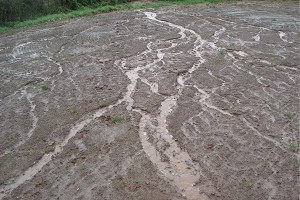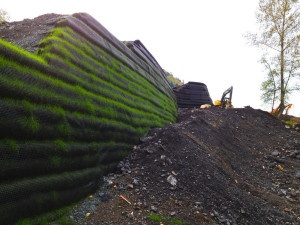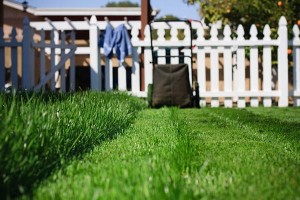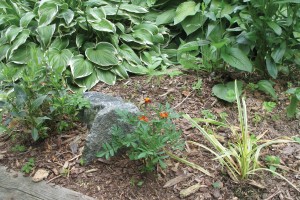New construction creates conditions that have the potential to cause slope destabilization, dangers to wildlife and fisheries habitats; stormwater runoff increases and results in increased sedimentation. Careful erosion control planning is required to ensure environmental stewardship and safety for generations to come.
In defining an effective approach to erosion control, one should take into consideration both the long-term effectiveness as well as financial feasibility.
The following approaches and methods of erosion control have proved to be ineffective for various reasons:
 Inadequate site assessment. Though not an end solution, the site assessment is critical when determining which method is used. When important aspects of the site conditions are not taken into consideration, inappropriate "solutions" may be prescribed.
Inadequate site assessment. Though not an end solution, the site assessment is critical when determining which method is used. When important aspects of the site conditions are not taken into consideration, inappropriate "solutions" may be prescribed.
One example of a site condition is the steepness of the slope. The erosive forces of runoff increases with both slope gradient and distance down slope and therefore erosion is typically at it’s maximum at the lowest part of the steepest slope section. Not recognizing or taking into account the destructive force of water during seasonal runoff in scenarios with significant slope and distance will result in ongoing and increasing site erosion.
- A focus on sediment control (managing sediment that has already eroded) instead of focusing on the root of the erosion problem through prevention.Though silt fences and other sediment barriers may be effective in keeping stormwater and fisheries habitats from undue sedimentation, the approach should only be used temporarily. Filter socks like Denbow’s Filtersoxx can be used both as a temporary sediment barriers but also as part of a more comprehensive deployment of erosion control products. Single application solutions, not comprehensive. These methods may provide partial or temporary results but are often not effective for the following reasons:
- Engineered structures - Though usually immediately effective, engineered structures like block retaining walls, do not adapt to changing site conditions, can become progressively weaker over time and are often the most expensive solution. For this reason engineered structures are not always the best method of erosion control.
- Adding rip rap to ditches to minimize/slow runoff. In some scenarios with minimal run-off, rip rap can be effective but in instances with significant water speed and sedimentation, erosion control is not mitigated.
- Adding vegetation alone, without a structural component. Though grasses can create a groundcover that can absorb some moisture, they have no slope stabilization benefits have less effective storm water filtration ability compared to native ground cover.
Erosion Control Solutions that Work
 The solution to these incomplete and ineffective methods is to combine them into a comprehensive bio-structural approach. This approach includes engineered structural components that are paired with natural, vegetative products that will adapt and grow within the site structure over time. Starting with expert consultation to identify the appropriate method, the following are a few combination solutions available for different applications.
The solution to these incomplete and ineffective methods is to combine them into a comprehensive bio-structural approach. This approach includes engineered structural components that are paired with natural, vegetative products that will adapt and grow within the site structure over time. Starting with expert consultation to identify the appropriate method, the following are a few combination solutions available for different applications.
- Similar to hydroseeding, but providing much more of the underlying structure needed to prevent erosion, Terraseeding uses compost-based soils and growing mediums. During the Terraseeding process, seed is injected directly into the soil compost mixture as the material is blown into place, providing optimum moisture and nutrient availability.
- Denbow’s Kicking Horse Canyon Park Bridge project in Golden is an perfect example of combination solutions that utilized Terraseeded EcoBlanket and Filtrexx Rip-rap Grout installed to address erosion and to vegetate extremely steep slopes.
EcoBlanket - On areas with a slope of 50% or less, EcoBlanket is uniformly applied directly at the soil surface with a pneumatic blower as specified by Rexius. Typically applied at a depth of 1 to 2 inches, but application depth can vary depending the site requirements. In extreme conditions and where specified by the Engineer, EcoBerms or FilterSoxx may be added and constructed at the top of the slope and in parallel intervals down the profile of the slope if necessary.
- Extreme slope erosion may require a natural retaining wall solution for reinforcing slopes like Cascadia Green Wall, which allows for natural buffer zone design and water gardens. It is a cost effective solution when compared to concrete, block, gabion retaining walls.
Contact Denbow for an erosion control solution that stands the test of time.
Save
Save



